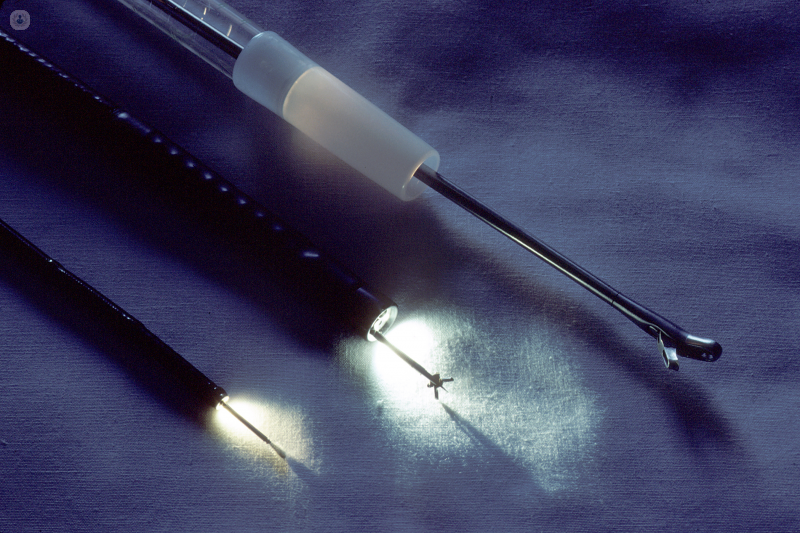Endoscopic submucosal dissection (ESD)
Dr Sebastian Zeki - Gastroenterology
Created on: 04-13-2018
Updated on: 01-16-2024
Edited by: Jay Staniland
What is endoscopic submucosal dissection (ESD)?
Endoscopic submucosal dissection (ESD) is an advanced endoscopic procedure used to remove tumours in the digestive tract that have not yet entered the muscle layer.
The patient is sedated during the procedure and a local anaesthetic in the form of spray may be used to numb the throat if the ESD is performed via the mouth.
ESD provides several advantages over similar procedures, such as EMR and polypectomy, including that it allows greater control over the size and shape of the resected area, en bloc resections are possible even with large tumours, and it allows the doctor to remove even tumours with submucosal fibrosis.
Endoscopic submucosal dissection was developed in Japan, where it is becoming accepted as the standard technique for dealing with early-stage stomach tumours. In western countries, relatively few specialists perform ESD, due to the advanced nature of the technique and the special training required to perform it.

Why is endoscopic submucosal dissection (ESD) performed?
Endoscopic submucosal dissection is used to remove tumours in the lining of the digestive tract, particularly in the stomach, but it may also be used for tumours in the oesophagus or colon. It is generally used for early-stage cancer – for tumours that have not yet entered the muscle layer below the submucosa.
What does ESD involve?
Endoscopic submucosal dissection involves a long tube (endoscope), equipped with a light and camera being passed through the digestive system to reach the lesion that needs to be removed. If the lesion is in the stomach, the tube will be introduced through the mouth and fed down the oesophagus; if the lesion is in the colon, the endoscope will be introduced via the anus.
Once the endoscope is in place, the procedure is carried out as follows: First, the submucosa (the connective tissue beneath the immediate lining of the digestive system) is injected with fluid via the endoscope to lift the lesion. Next, using small surgical instruments – numerous types of electrosurgical knives can be used for this – through the endoscope, the doctor makes incisions in the mucosa surrounding the lesion, before dissecting the submucosa underneath the lesion, allowing it to be removed.
How to prepare for endoscopic submucosal dissection
Your doctor will provide instructions, which usually involve not eating or drinking anything for a period of time before the procedure (usually eight hours). If the ESD is performed on the colon, standard colonoscopy preparation will be required.
Post-operative care
After the operation, the patient will be monitored overnight at the hospital. The following day, another endoscopy will be carried out to assess the results of the operation and check for complications.


